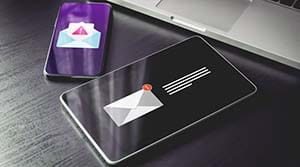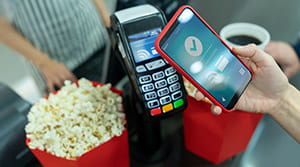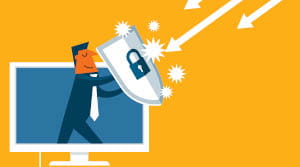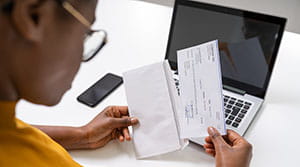Staying One Step Ahead of Cyber Thieves

With more U.S. employees working from home these days, cyber security experts agree it’s no coincidence there’s been an increase in cyber attacks on home computers. One of the most dangerous and costly cyber threats is a ransomware attack.
What is ransomware?
Ransomware works when a thief gains access to a person’s computer by getting them to unknowingly install an infected file. Once the file, called malware, is on the computer, the thief can gain access to your device, folders or entire system, locking you out until a ransom is paid. Most often, infected files are installed through phishing emails or social media messages. These messages often come disguised as voicemails, invoices and payment notifications with prompts to click on a link or open a file.
Cyber thieves have many tricks to try to get you to click on a dangerous link. For example, if you’ve left a review for a restaurant, a cyber-thief could send you an email with a web domain pretending to be from the restaurant, when in reality it is ransomware. The infected file that gets installed on your computer can be contagious, and machines linked to the same network can spread it, potentially infecting all your connected devices.
How to Protect Yourself
- Don’t trust links or attachments you aren’t expecting.
- Verify a message is legitimate by contacting the sender directly by telephone or their public contact information; do not reply to the email.
- If you think your computer may have been infected, do not provide any information or follow any instruction, as it may expose you to further theft.
- Be mindful of emails you receive with links and/or attachments and be mindful of red flags, such as misspellings, a sense of urgency with the message or requests for sensitive information.
- Contact your financial institution and the national credit bureaus to notify them of possible theft of information.
How to Protect Your Personal Devices
- Make sure you are using up-to-date antivirus software.
- Think twice before downloading free apps and programs from the internet.
- Stay away from illegal websites and illegally downloading software, movies and music. Many times they are infected with malware.
- Make sure your computer and digital devices have the latest security updates (Windows or Mac OS) as well as all other programs you use.
- Regularly back up your files. Keep a backup of files that are important to you in a location not connected to your computer, such as USB or cloud storage.
- If you believe your computer is compromised, take immediate action. Disconnect from the internet and consider deleting and clearing your browser history of cookies and cache, as these elements pose a threat if compromised. You may also try scanning your computer for viruses and malware, or contacting your computer’s manufacturer or a local computer shop to rid the device of the ransomware.
























